Post by stevep on Dec 2, 2008 20:44:33 GMT
Assembled the base (easy but need to be aware that it's not quite square - roughly 500 x 470, so it's easy to get the 4 sheet steel pieces assembled incorrectly, but don't ask me how I know that). The top section (table, spindle and motor assembly) is quite chunky so you might want to get another pair of hands to lift it in position. If you're going to fit castors it's best done before the top goes on.
The aperture in the table is exactly 144mm dia, and about 37mm deep (as it's a casting it's a bit rough and uneven inside.) That gives a guide as to the maximum cutter block size, and how far you can lower it below the table surface. (The marks on the table are paint which has rubbed off the bottom of the fence unit).
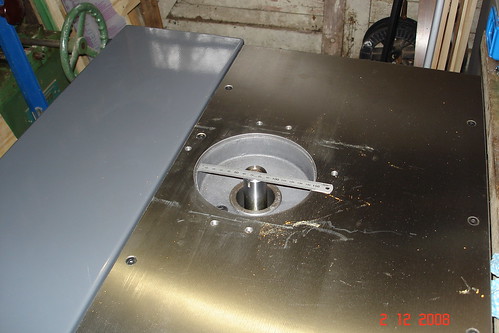
The fence and cutter guard is a chunky casting. In position, it's apparent that there isn't a lot of room in front of it:
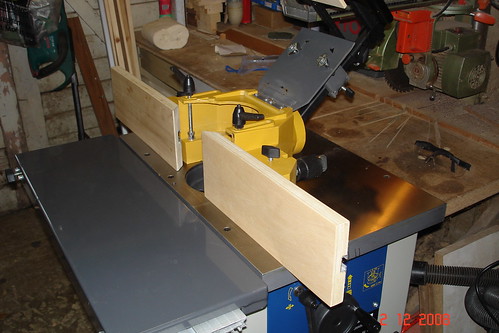
but you can put it on the other way round and feed from the other end of the machine.

There are threaded holes in the table which even allow you to put it on at 90º
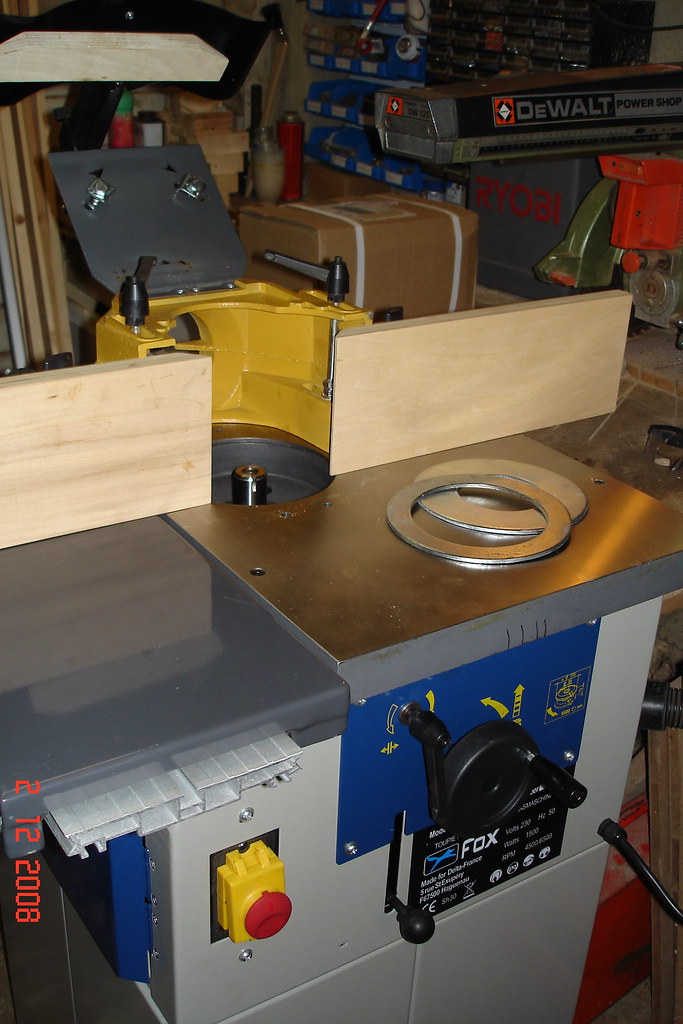
The above four images show the extension table in place, made of steel sheet and painted grey. It fits on the aluminium sub table, supported in the same grooves that the sliding table runs in. The sliding table itself is another bit of chunky cast iron, well finished and runs very smoothly with no play or wobble. I checked it with a square and DTI after I fitted it and it was pretty well spot on. The sliding table fence is an aluminium extrusion, fitted with a flip over end stop and a hold down clamp. There is a pop-up pin in the table to align it at 90º.
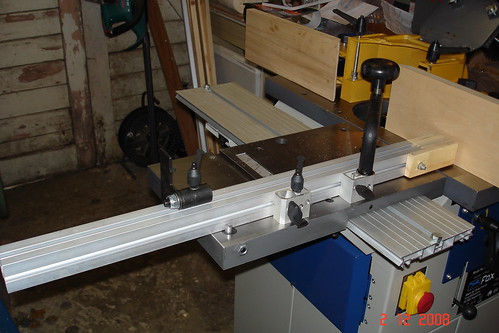
This shot shows the block fitted - 100mm CMT profile block....
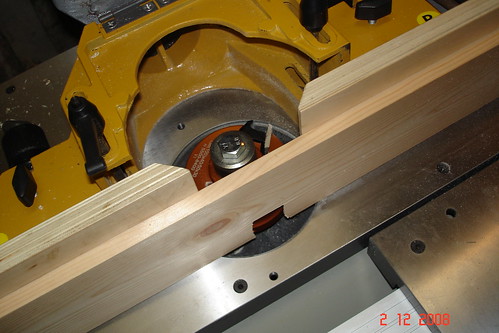
....which comes with a set of plain knives. I've just fitted a softwood through-fence ready to rebate some bits of beech - the subject of another post I'm afraid!
Cons:
1. A few rough edges here and there, but nothing some careful fettling with a fine file can't put right.
2. Some of the guard and fence sub assemblies, as supplied, were assembled back to front, which took a bit of figuring out, but again, nothing drastic.
3. There aren't any assembly instructions as such. The assembly drawings in the leaflet were useful though. The leaflet refers to the Kity 429 in a couple of places, and I've seen another reference to this machine being a clone of the Kity. You probably already know it is also badged as a Charnwood - see the pdf review at www.charnwood.net/pdfs/test_reports/W030_GoodWoodworking_May2008.pdf
4. Some of the guard assembly is a bit primitive, and you might need to spend a bit of time with the assembly to make sure things fit properly. I had to do a bit of filing to get the vertical shaw guard to line up parallel to the fence. Again, not drastic, but I think I might remake a few of the clamp components to make them work better.
5. There aren't any holes in the big spring steel shaw guide to fit a wooden pad to, and it won't be easy to drill them. Maybe a Dremel with a small grinding bit will work - I'll try it tomorrow.
Pros:
1. It only cost £350, and free delivery.
2. The cast iron tables are smooth and add a nice bit of weight.
3. Early days, but it feels like a proper machine, not a toy. Obviously, at this end of the scale, it's not a monster, but it will easily be capable of doing kitchen unit doors. With a couple of tables each end for support there's no reason it can't do doors and windows, though (because of the 144mm limit on block size, it might struggle with a very deep rebate on say a door frame cill.
The aperture in the table is exactly 144mm dia, and about 37mm deep (as it's a casting it's a bit rough and uneven inside.) That gives a guide as to the maximum cutter block size, and how far you can lower it below the table surface. (The marks on the table are paint which has rubbed off the bottom of the fence unit).

The fence and cutter guard is a chunky casting. In position, it's apparent that there isn't a lot of room in front of it:

but you can put it on the other way round and feed from the other end of the machine.

There are threaded holes in the table which even allow you to put it on at 90º

The above four images show the extension table in place, made of steel sheet and painted grey. It fits on the aluminium sub table, supported in the same grooves that the sliding table runs in. The sliding table itself is another bit of chunky cast iron, well finished and runs very smoothly with no play or wobble. I checked it with a square and DTI after I fitted it and it was pretty well spot on. The sliding table fence is an aluminium extrusion, fitted with a flip over end stop and a hold down clamp. There is a pop-up pin in the table to align it at 90º.

This shot shows the block fitted - 100mm CMT profile block....

....which comes with a set of plain knives. I've just fitted a softwood through-fence ready to rebate some bits of beech - the subject of another post I'm afraid!
Cons:
1. A few rough edges here and there, but nothing some careful fettling with a fine file can't put right.
2. Some of the guard and fence sub assemblies, as supplied, were assembled back to front, which took a bit of figuring out, but again, nothing drastic.
3. There aren't any assembly instructions as such. The assembly drawings in the leaflet were useful though. The leaflet refers to the Kity 429 in a couple of places, and I've seen another reference to this machine being a clone of the Kity. You probably already know it is also badged as a Charnwood - see the pdf review at www.charnwood.net/pdfs/test_reports/W030_GoodWoodworking_May2008.pdf
4. Some of the guard assembly is a bit primitive, and you might need to spend a bit of time with the assembly to make sure things fit properly. I had to do a bit of filing to get the vertical shaw guard to line up parallel to the fence. Again, not drastic, but I think I might remake a few of the clamp components to make them work better.
5. There aren't any holes in the big spring steel shaw guide to fit a wooden pad to, and it won't be easy to drill them. Maybe a Dremel with a small grinding bit will work - I'll try it tomorrow.
Pros:
1. It only cost £350, and free delivery.
2. The cast iron tables are smooth and add a nice bit of weight.
3. Early days, but it feels like a proper machine, not a toy. Obviously, at this end of the scale, it's not a monster, but it will easily be capable of doing kitchen unit doors. With a couple of tables each end for support there's no reason it can't do doors and windows, though (because of the 144mm limit on block size, it might struggle with a very deep rebate on say a door frame cill.



 as a side note if you add a false bed and raise the spindle you are not limited to 144mm . Although it does look like the gaurding wont let you go much bigger .
as a side note if you add a false bed and raise the spindle you are not limited to 144mm . Although it does look like the gaurding wont let you go much bigger . 


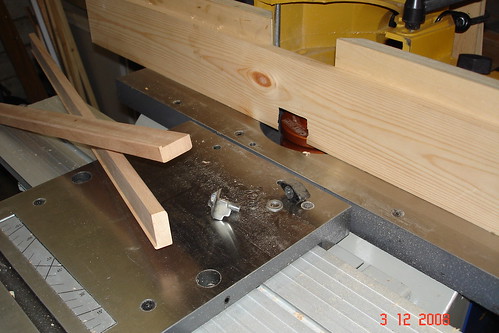
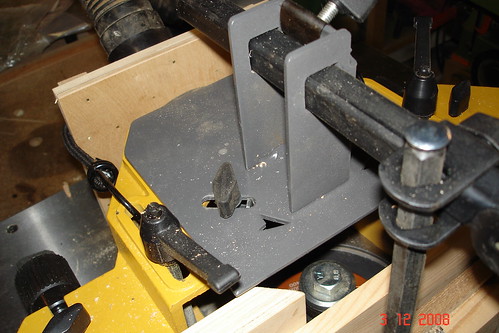
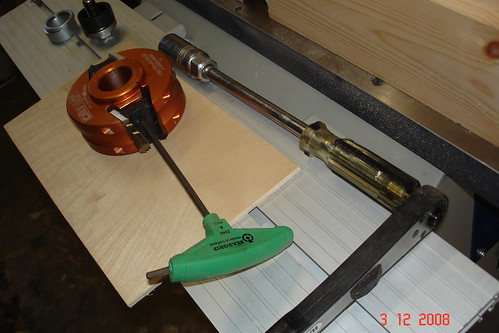

 I think the router spindle thing comes into its own when you put a router in a table . Then a spindle wins hands down but i am still looking for a use just so i can disagree with Jacob ;D
I think the router spindle thing comes into its own when you put a router in a table . Then a spindle wins hands down but i am still looking for a use just so i can disagree with Jacob ;D